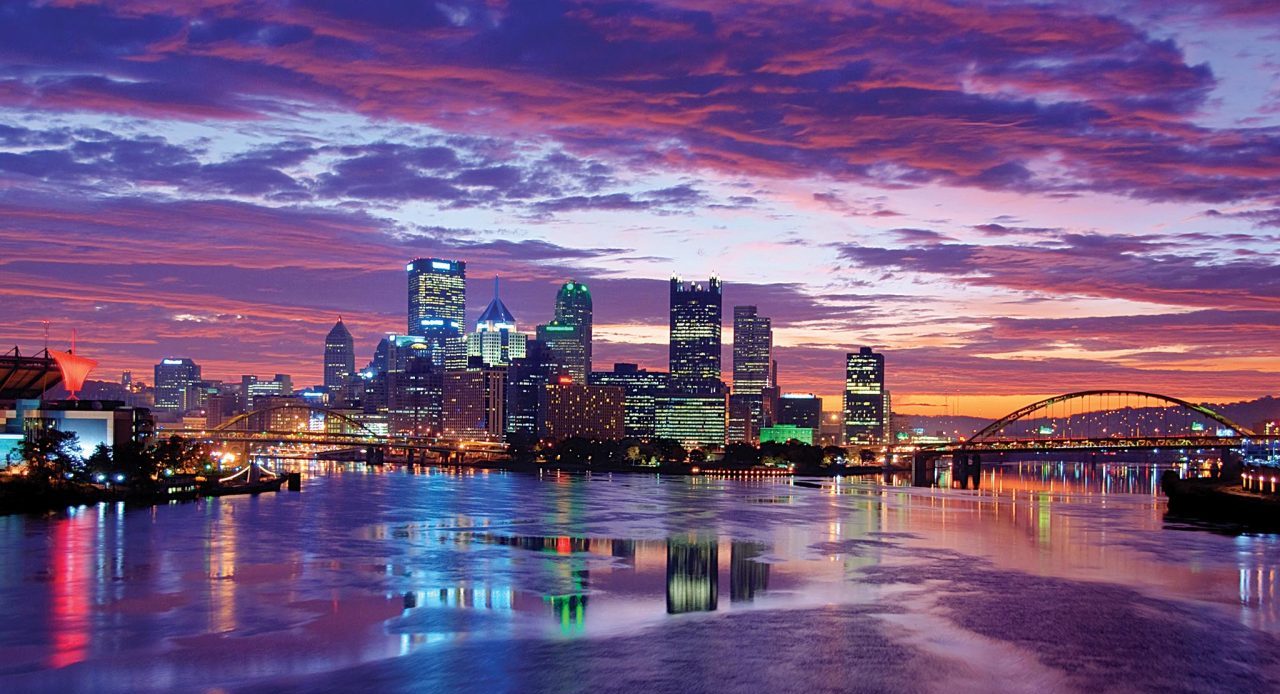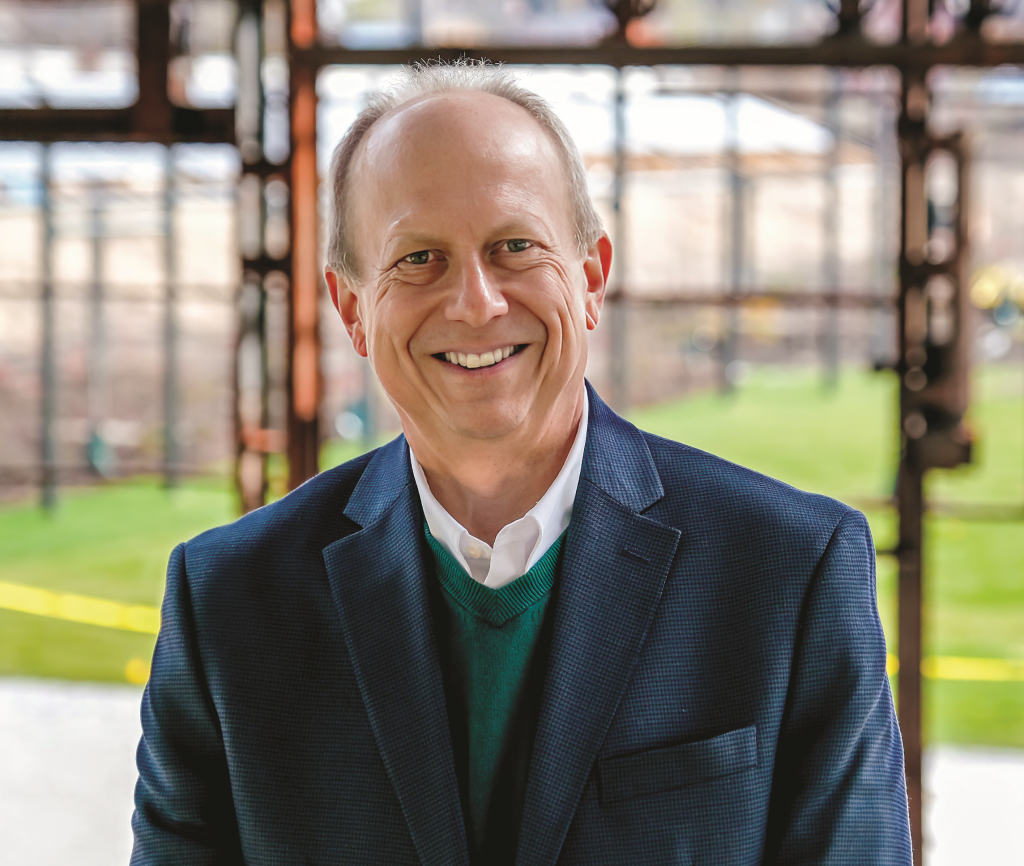
Editor’s note: We invited 13 regional leaders to give their thoughts on how to revitalize and reinvigorate Downtown Pittsburgh. Despite numerous emails back and forth with the communications staff of Pittsburgh Mayor Ed Gainey from March 15 to April 20, the Mayor did not offer his thoughts on Downtown Pittsburgh. The responses of 12 other leaders follow.

DON SMITH, PRESIDENT, REGIONAL INDUSTRIAL DEVELOPMENT CORPORATION
If we’re going to formulate a plan for revitalizing Downtown today and into the future, we need to understand the past — how Downtown developed over time.
Fifty years ago, Pittsburgh was home to two dozen Fortune 500 companies. That translated into many office workers and a demand for office space.
The Golden Triangle was a successful agglomeration economy, in which companies benefited from the central location for workers, proximity to the financial and legal services that companies needed, and access to and support for the retail, services and cultural amenities those management workers wanted. Many of those companies started and grew in other parts of the region until they reached a size that justified having a large headquarters presence Downtown. Growing profitable companies in the region were key to Downtown then, and will be key to the future of Downtown. We cannot continue to shrink as a region and hope to preserve the vitality of Downtown.
Today, Pittsburgh has no more than a few such companies and we can see how the economy has shifted before, during and since COVID.
University-driven tech industries spurred growth in communities such as Oakland, Lawrenceville, the Strip District, the Baum Center corridor, and East Liberty. Downtown maintained viability as a smaller office center with arts and entertainment amenities, and a nascent residential location, mainly for empty nesters and high-net worth condominiums.
As we look to build the future of Downtown Pittsburgh, our approach must be market driven, based on today’s needs and economic realities, rather than on nostalgia or wishful thinking.
Can widespread office-to-residential conversions be made economically feasible? Can entertainment and arts venues attract visitors and ancillary services without the office and residential flow of people? Can we better connect Downtown with the nearby communities that are currently better positioned? What advantages does Downtown convey to companies — and what kinds of companies? Who can be attracted to live Downtown, and can we deliver housing at market rates (or below)? How do we create a built environment that supports and encourages all those activities and generates the positive revenue that successful downtowns feature?
We need to think carefully about the kinds of investments that will contribute directly to making Downtown Pittsburgh economically viable and can be sustained long term. There simply is not enough money being generated in the region to subsidize uneconomic activities. The market still matters most, and I hope we don’t lose sight of that.
TOM FRANK, EXECUTIVE DIRECTOR, NAIOP PITTSBURGH
Pittsburgh, the place where I was born and grew up, has always been known for its grit, resilience and reinvention. Throughout our history, we have embraced two remarkable renaissances, both utilizing public and private partnership. We now face new challenges. Unprecedented office vacancies, a shrinking tax base due to building reassessments, lending restrictions and rising interest rates can catalyze Pittsburgh to embark on its third renaissance.Pittsburgh’s “industrial revolution” saw the city rise as a powerhouse of steel production in the late 19th and early 20th centuries. The steel mills that once dominated the landscape fueled unprecedented growth and prosperity, shaping Pittsburgh’s identity and fortunes. However, with the collapse of the steel industry in the latter half of the 20th century, the city faced a period of economic downturn and urban decay.
Yet, from the ashes of the steel era Pittsburgh experienced a remarkable transformation through strategic investments in technology, health care, education, and the arts. Innovation hubs such as Carnegie Mellon University and the University of Pittsburgh became catalysts for cutting-edge research and development. The emergence of companies like Google, Uber, and others solidified Pittsburgh’s reputation as a tech and innovation hub, attracting talent and investment from around the globe.
Now, as the world grapples with the aftermath of the COVID-19 pandemic and the seismic shifts it has brought to the way we work and live, Pittsburgh faces new challenges. The reassessment of office buildings, the shift in remote work policies, a decrease in tax revenue and other factors leave swaths of office space in the Golden Triangle unoccupied and underutilized.
However, within these challenges lies an opportunity to embark on Pittsburgh’s third renaissance. To seize this opportunity, it is imperative that we forge a bold vision for the future and come together as a community to realize it. This vision must be built on the principle of the previous two renaissances: a strong public-private partnership that embraces collaboration and innovation.
A key component of this vision will be revitalizing Pittsburgh’s Golden Triangle and repurposing unoccupied office buildings. Local leadership, developers, businesses, and community stakeholders must reimagine these spaces or make the bold decision to remove them and start anew. We must leverage Pittsburgh’s unique strengths — its world-class research institutions, talented workforce, and vibrant cultural scene — to attract businesses, startups, and investment. Other ideas for conversion include increased co-working spaces, affordable housing, health and wellness centers and more. Although the current state of funding gaps may seem insurmountable, if we work with our leaders to outline the problems, they can aid in the solution. To make things more complex, we must also continue to invest in infrastructure, transportation, and safety to ensure that Pittsburgh remains a competitive and desirable place to live, work, and do business.
In the face of uncertainty and change, Pittsburgh has always risen to the occasion, reinventing itself for the future. Let us embrace this moment of challenge and opportunity with creativity and collaboration.



